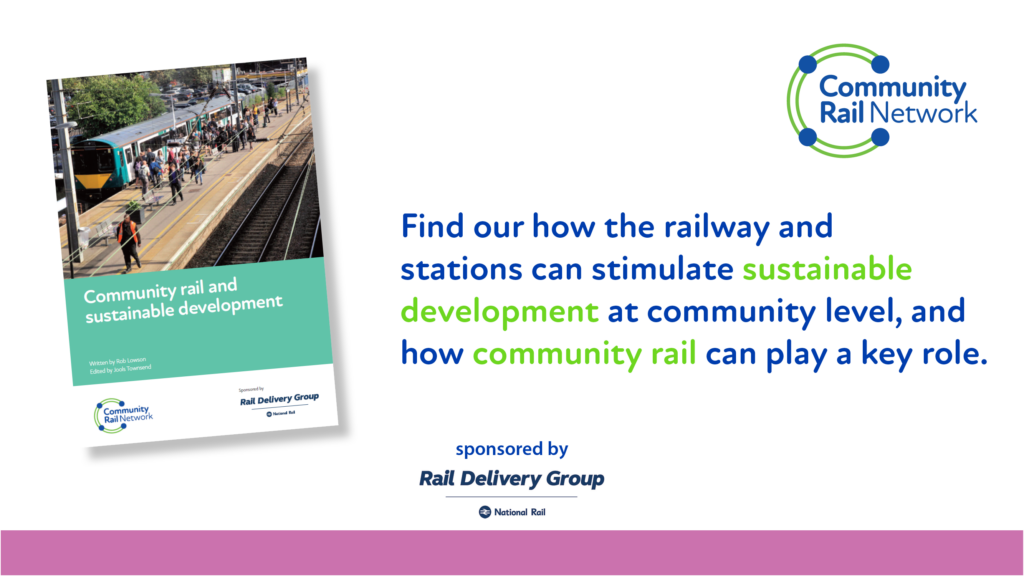
Community-based partnerships and groups across Britain, working with the rail industry, are making positive contributions to the economic, social, and environmental vitality of local areas, a new report shows.
‘Community rail and sustainable development’, produced by Community Rail Network with support from Rail Delivery Group, highlights how railways and stations can stimulate sustainable development at a grassroots level, and how community rail plays a key role in the process.
The report illustrates how sustainable development relies heavily on community-level activity, community engagement, and change being enacted in places, and how its key principles align with those of the growing community rail movement, with partnerships and groups leading the way in embedding sustainable development in the communities they serve.
A range of sustainable development projects and engagement activities that respond to local needs are showcased in the report, including:
- Devon and Cornwall Rail Partnership and the Bittern Line Community Rail Partnership supporting local economies by championing independent businesses and developing schemes to add value for rail passengers;
- A host of community rail partnerships and groups supporting recovery from the pandemic, bolstering community resilience and social sustainability;
- Petersfield and Swaythling stations in Hampshire offering ‘Free Shops’, redistributing food and other items such as school uniforms to reduce waste and support those most in need;
- Redundant buildings at Haltwhistle Station in the Tyne Valley being converted to flexible office and studio space, utilising solar power;
- Stations across Essex installing permanent and eco-friendly water supplies to help keep gardens in perfect condition.
The report follows the publication of the Williams-Shapps Plan for Rail, in which the government indicates that it wants railways to become more inclusive, accessible, sustainable, and responsive to local needs and opportunities. The plan also states that community rail partnerships and groups will be empowered to strengthen rail’s social and economic impact, and the report emphasises how community rail can provide an ideal vehicle for this, working with industry partners to spearhead positive changes against a backdrop of rail transformation, transport decarbonisation, and a greener, fairer recovery from COVID-19.
Jools Townsend, chief executive of Community Rail Network, said: “Community rail is sustainable development in action at a grassroots level. Sustainable development is critical to everyone’s future, and communities need to be empowered and encouraged to lead the way, spearheading positive change locally.
“Community rail partnerships and groups are increasingly framing projects with sustainability in mind, but there are undoubtedly still many more new, innovative ways that communities can be supported to develop, and different directions for sustainability projects to go in. Community Rail Network is committed to supporting its members in seeking out these directions and further embedding the principles of sustainable development in their work.”
Andy Bagnall, director general at Rail Delivery Group, added: “These projects showcase that stations are more than just departure and arrival points, they can bring communities and businesses together. Train travel is already the greenest mode of public transport, and the rail community is doing everything it can to ensure sustainability is at the forefront of all aspects of the rail experience.”

